Today, the Muristan is a bustling commercial area in the heart of the Old City, with shops, restaurants, and markets filling the narrow streets and alleys. The complex is also home to several important religious sites, including the Church of St. John the Baptist and the Church of the Holy Sepulchre, just a short walk away.
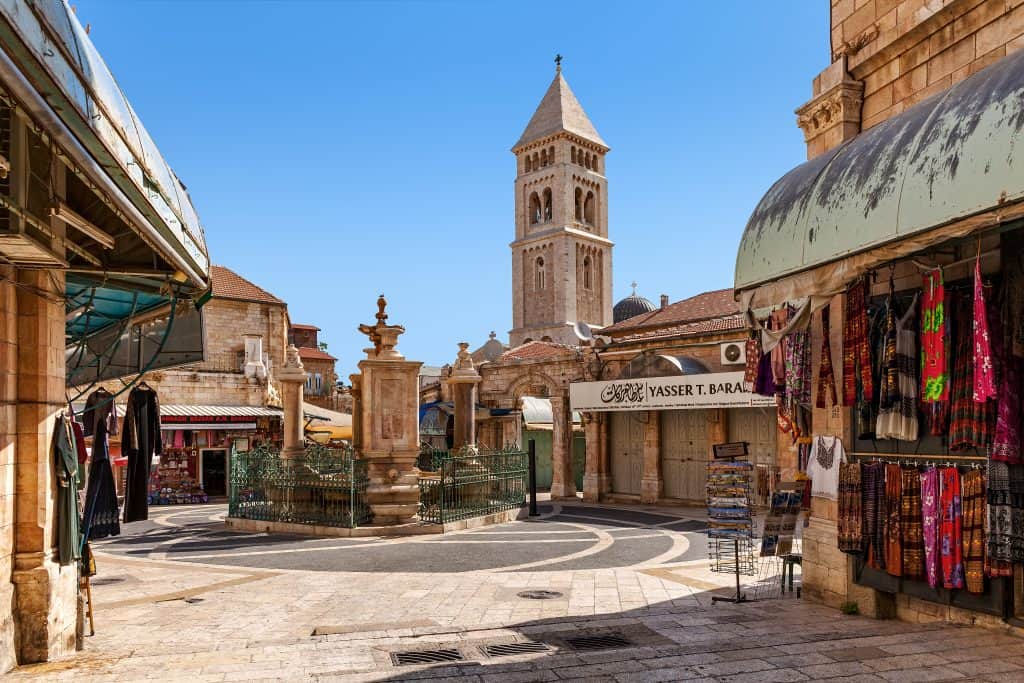
The History of the Muristan
The Muristan has a vibrant history that goes back to the Roman Period. In the 2nd century CE, the Roman Emperor Hadrian decided to destroy Jerusalem and rebuild it as a Roman pagan city – Renaming it Aelia Capitolina. Right where Murustan is today, he built the city’s Forum and an adjacent Temple next to it dedicated to Venus or Jupiter. The remains of that temple are visible and can be accessed from the Alexander Nevsky Church. The Church of the Holy Sepulchre is built on the ruins of that Roman temple.
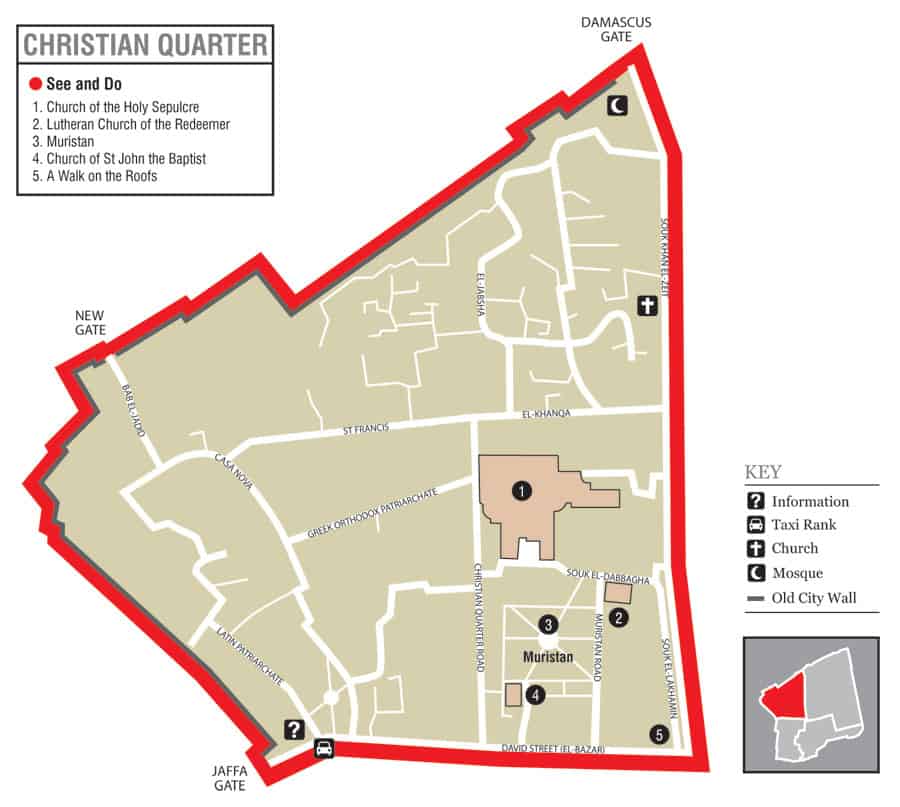
Credit: David Bjorgen, CC BY-SA 1.0, via Wikimedia Commons
Beneath the 2nd-century roman forum, excavations found the “Second City Wall” of Jerusalem from the time of Herod the Great (37 to 4 BCE) described by the Jewish writer Flavius Josephus in the 1st century CE, and thus the question of the correctness of the location of Jesus’ crucifixion site (Calvary) and the Tomb of Jesus. For more info about visiting the remains of the wall, check out the Church of the Redeemer website!
Christian Quarter Ultimate Guide
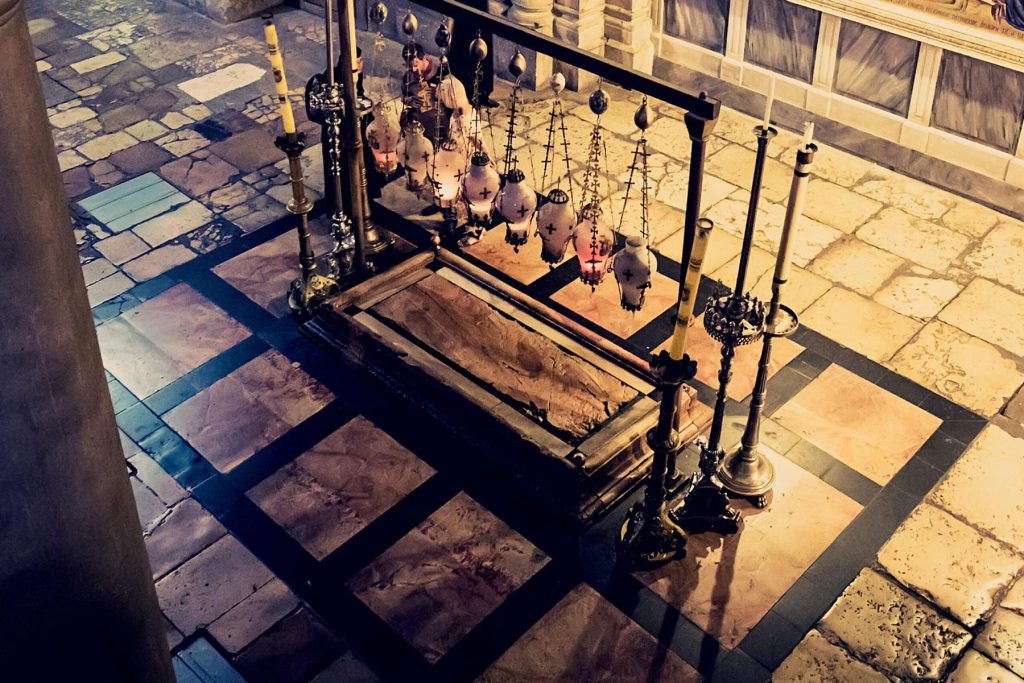
According to Roman and Jewish custom at the time of Jesus, this had to be outside the town. It was hoped that excavations in the Muristan would contribute new knowledge. During the construction of the Church of the Redeemer in 1893, a large wall was discovered running in an east-west direction, seemingly the “Second City Wall,” and with it, the proof of the authenticity of the holy places in the Church of the Holy Sepulchre.
First Mentionings of the Muristan
The earliest historical mention of the location Muristan was in 600 CE when a certain Abbot Probus was commissioned by Pope Gregory the Great to build a hospital in Jerusalem to treat and care for Christian pilgrims to the Holy Land.
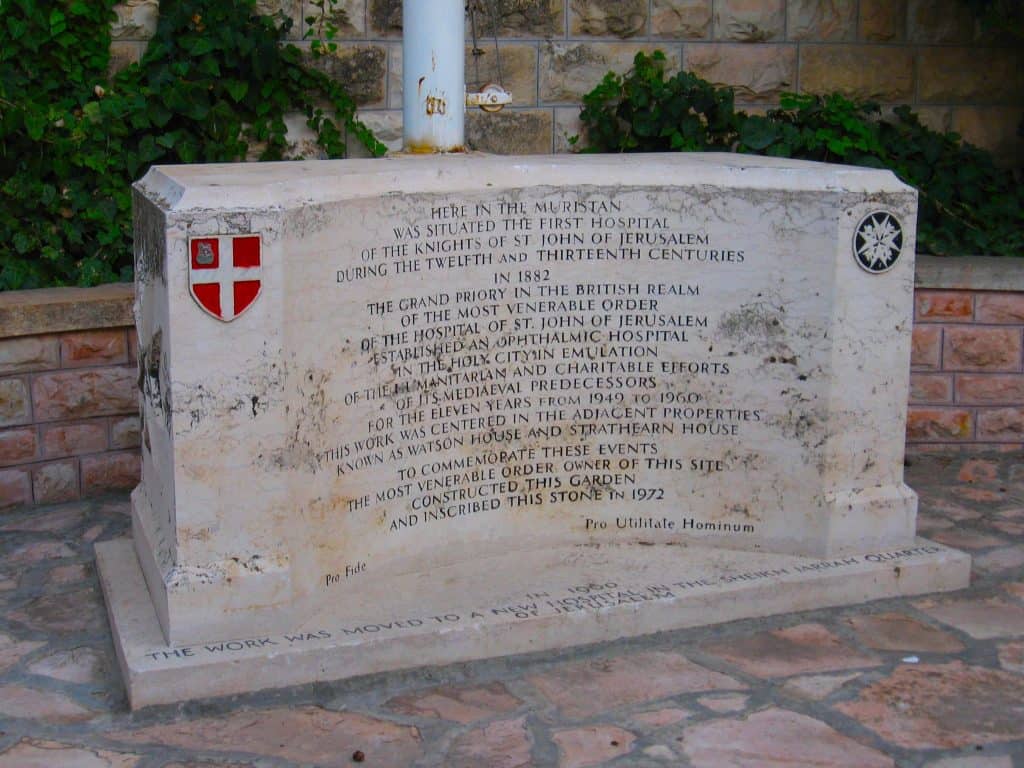
This hospice was most likely destroyed about fourteen years later when Jerusalem fell to the Persian army, the Christian inhabitants were slaughtered, and their churches and monasteries were destroyed. The building was probably restored after Jerusalem fell again under Byzantine dominion in 629 CE.
Church of St. John the Baptist
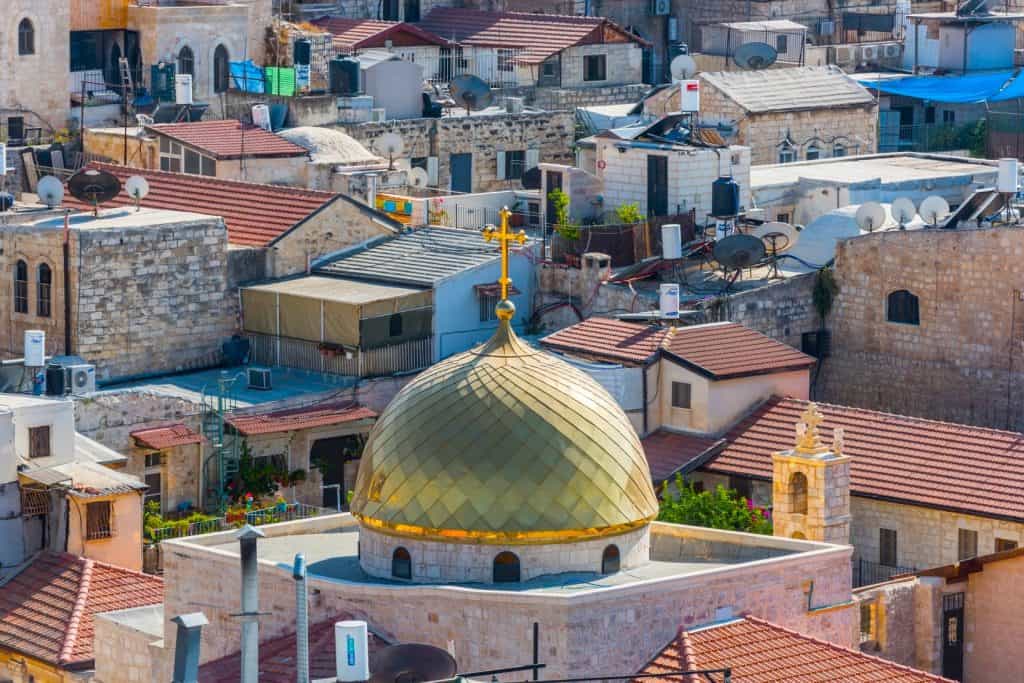
The Knights Hospitaller built the Crusader Church of St. Mary Latina, a hospice, and a hospital in the 12th century. This Christian military order established hospitals throughout the Holy Land to care for sick and injured pilgrims. The hospital in Jerusalem was one of their most important facilities and was a refuge for travelers from Europe and the Middle East. Over time, the hospital expanded to include a range of medical and social services, including a pharmacy, a bakery, and even a stable for the horses of the knights.
The Area in the Modern Period
The Muristan continued to serve as a hospital throughout the centuries, and various religious and cultural groups used it. In the 19th century, the Ottoman Empire took control of the city and converted the Muristan into a market. The market still operates today and sells various goods, including traditional handicrafts, clothing, and souvenirs. The narrow alleys and colorful stalls of the Muristan provide a glimpse into the vibrant bazaar culture of the Middle East.
Church of the Redeemer
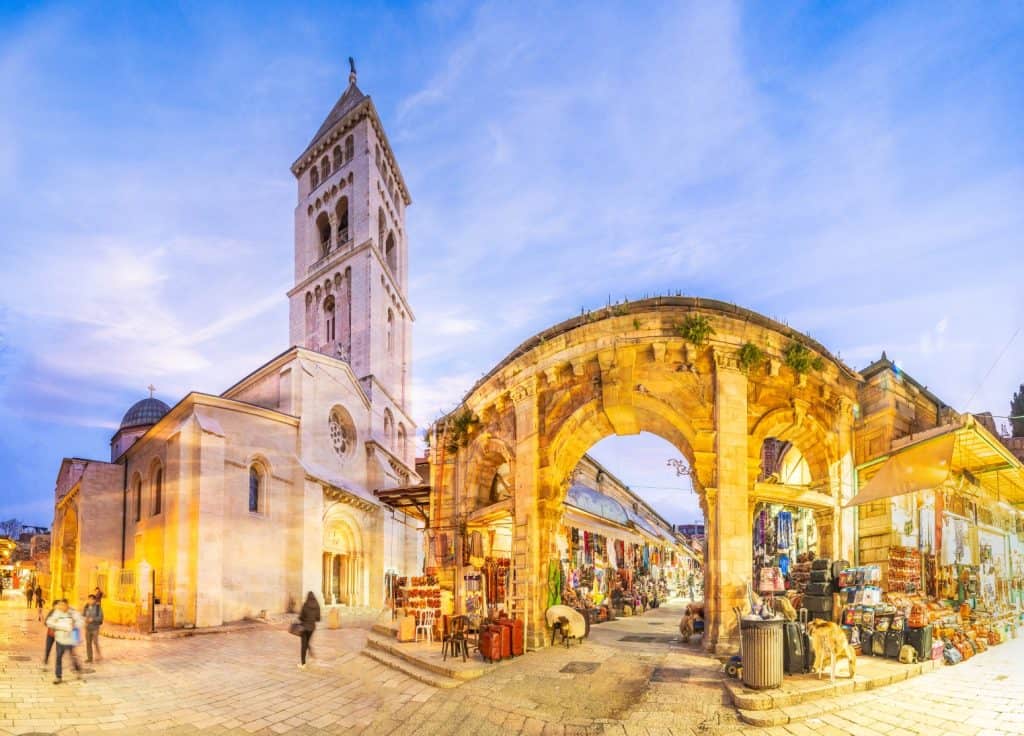
Despite its many transformations over the centuries, the Muristan remains an important cultural and historical site in Jerusalem. Its rich history and unique architecture make it a popular destination for tourists and locals. Its continued use as a market ensures that it remains a lively and bustling hub of activity in the city’s heart. Whether you are interested in the history of the Crusades or want to experience the sights and sounds of an authentic Middle Eastern bazaar, the Muristan is worth a visit.







